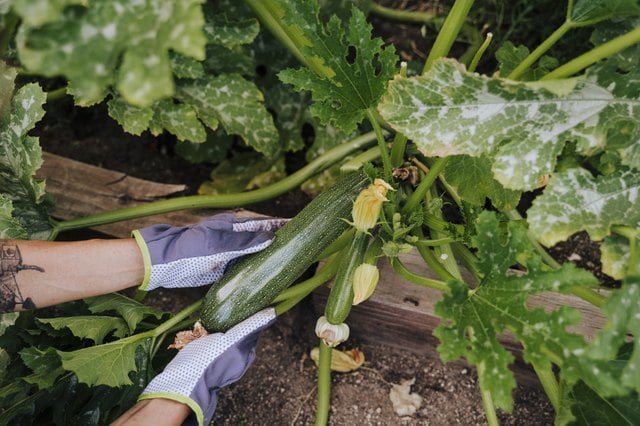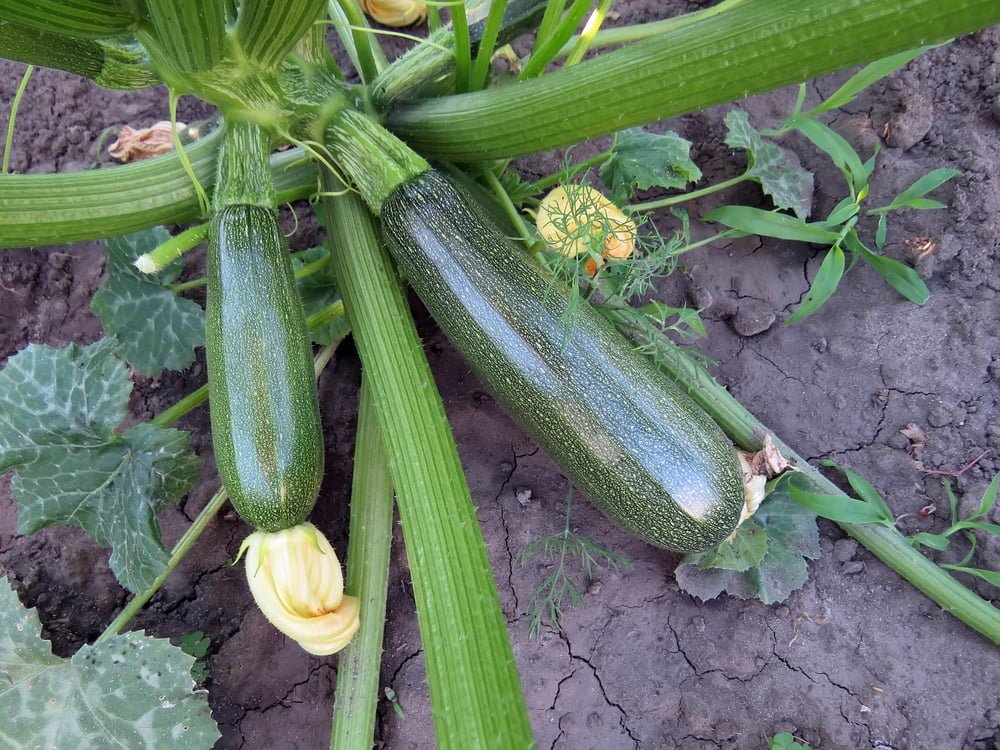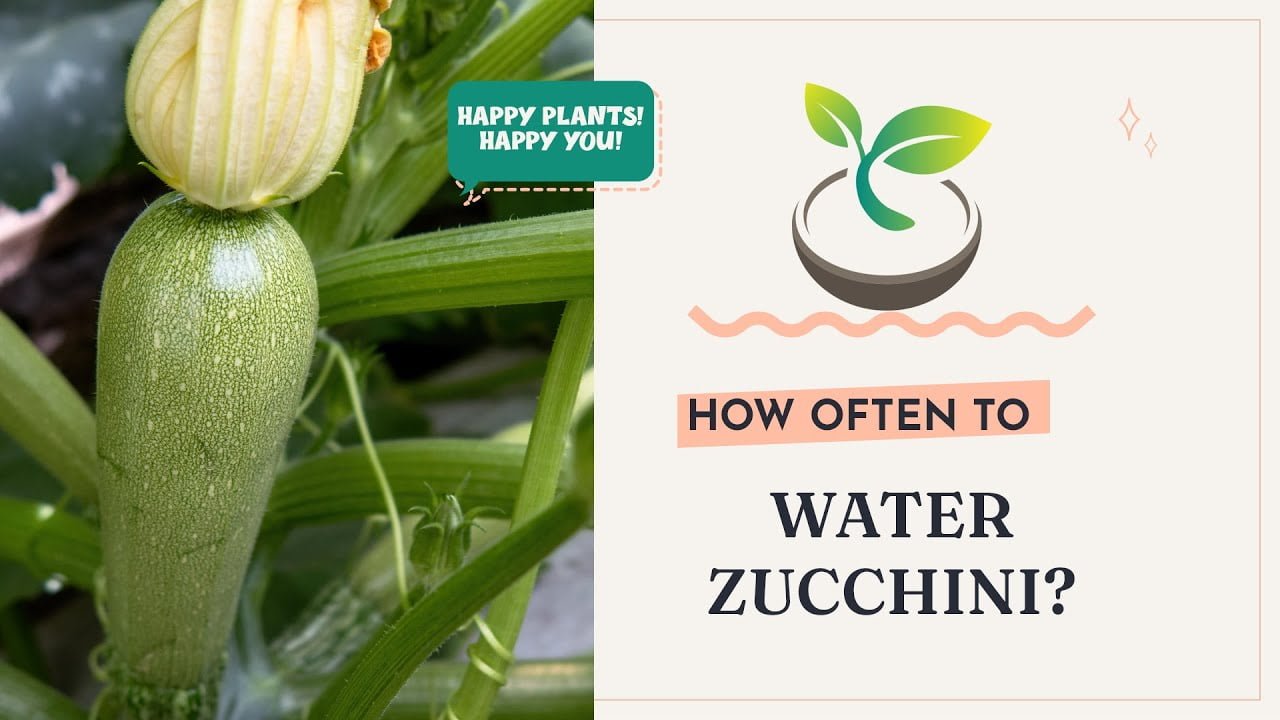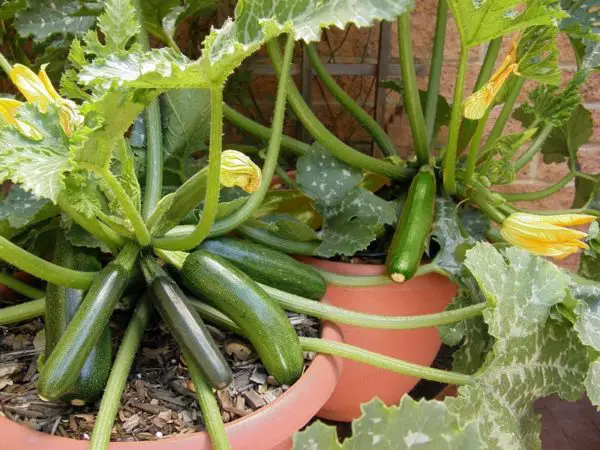Are you struggling to find the perfect watering schedule for your zucchini plants? Knowing how often to water them can be the difference between a thriving garden and droopy, lackluster plants. In this article, we will explore the best practices for watering zucchini, helping you create an optimal environment for these delicious and versatile vegetables to flourish. Whether you’re a seasoned gardener or just starting out, we’ve got you covered with all the essential tips and tricks. So grab your watering can and get ready to give your zucchinis the hydration they need to thrive!

Factors affecting zucchini water requirements
Climate conditions
The climate plays a significant role in determining the water needs of zucchini plants. In hot and dry climates, zucchinis will require more frequent watering to compensate for the increased evaporation rates. On the other hand, in cool and humid climates, zucchinis may require less frequent watering as the moisture in the air helps to maintain adequate soil moisture levels.
Soil type and quality
The type and quality of the soil can greatly impact the water requirements of zucchini plants. Well-draining soils, such as sandy or loamy soils, will require more frequent watering as they tend to dry out faster. Clay soils, although they provide better water retention, can become waterlogged if overwatered. It is important to ensure that the soil is well-balanced and has good moisture-holding capacity to meet the zucchini’s water needs.
Stage of growth
The growth stage of the zucchini plant also influences its water requirements. When establishing the plant, it is crucial to provide sufficient water to promote root development and enable the plant to anchor itself in the soil. During the vegetative stage, the plant focuses on leaf and stem growth, necessitating consistent moisture levels in the soil. However, during the flowering and fruiting stage, the water needs may increase as the plant diverts more energy towards producing zucchinis.
Container vs. ground planting
The choice between growing zucchinis in containers or directly in the ground can affect their water requirements. Container-grown zucchinis have limited soil volume available for water storage, which can lead to faster moisture depletion. Consequently, they often require more frequent watering compared to zucchinis planted in the ground. It is essential to consider the specific needs of each planting method and adjust watering accordingly.
General guidelines for watering zucchini plants
Establishing the plant
When initially planting zucchini seeds or seedlings, it is crucial to provide sufficient moisture to ensure proper root development and establishment. Water the soil thoroughly prior to planting, allowing it to soak in for a few hours. After planting, provide an initial watering to settle the soil around the roots and encourage the seeds or seedlings to take root.
Maintaining moisture levels
To maintain optimal moisture levels for zucchini plants, it is important to consistently monitor the soil’s moisture content. Zucchinis prefer a moderately moist soil, so aim to keep the soil evenly moist but not overly saturated. Regular watering, usually once or twice a week depending on the factors mentioned earlier, will help meet their water requirements throughout the growing season.
Avoiding overwatering
While it’s important to provide adequate moisture, overwatering can be detrimental to zucchini plants. Waterlogged soil can lead to root rot, depriving the plants of oxygen and impeding their growth. To avoid overwatering, ensure the soil is well-draining and allow the top few inches to dry out before watering again. Remember, it’s better to slightly underwater than to overwater zucchinis.
Checking soil moisture
Regularly checking the moisture levels of the soil is a key aspect of maintaining the proper watering schedule for zucchinis. Insert your finger or a moisture meter into the soil to a depth of about two inches. If the soil feels dry at this level, it’s time to water. However, if it still feels moist, it’s best to wait before watering to prevent waterlogging.
Watering techniques
Several watering techniques can be used to ensure the zucchini plants receive adequate moisture. Drip irrigation and soaker hoses are efficient methods that deliver water directly to the root zone, minimizing water evaporation and reducing the risk of fungal diseases. Mulching is another effective technique, as it helps retain soil moisture and suppress weed growth. Hand watering can be used for smaller gardens or when more precise control over the amount of water is desired. Additionally, watering zucchinis in the morning allows the leaves to dry out during the day, reducing the risk of foliar diseases.
Recognizing signs of under or overwatering
Wilting leaves
Wilting leaves are often a telltale sign that a zucchini plant is not receiving enough water. When the soil is too dry, the plant can’t draw up water through the roots, causing the leaves to droop and wilt. However, it is important to note that overwatering can also cause wilting, so it’s essential to consider other factors, such as soil moisture and weather conditions, before watering.
Leaf discoloration
When zucchinis are underwatered, the leaves may start to appear dull or yellowish. Lack of water restricts the plant’s ability to absorb nutrients, leading to nutrient deficiencies that manifest as leaf discoloration. On the other hand, overwatering can also cause leaf discoloration, usually resulting in a paler green color or even a yellowish tint.
Stunted growth
Insufficient water can cause stunted growth in zucchini plants. Inadequate moisture levels restrict the plant’s ability to take up nutrients, leading to slower growth and smaller fruit production. While other factors can also contribute to stunted growth, ensuring proper watering can help eliminate water-related issues.
Root rot
Overwatering zucchinis can lead to root rot, a condition where the roots become damaged or infected due to excessive moisture. This can ultimately affect the plant’s ability to take up water and nutrients, resulting in wilting, yellowing leaves, and overall poor plant health. Proper drainage, avoiding overwatering, and maintaining optimal soil moisture levels can help prevent root rot.
Adjusting watering frequency
Hot and dry climates
In hot and dry climates, zucchinis may require more frequent watering due to the increased evaporation rates. It is important to monitor the soil moisture levels more often and adjust the watering schedule accordingly. Providing supplementary shade or using mulch can help reduce evaporation and retain soil moisture for longer periods.
Cool and humid climates
In cool and humid climates, zucchinis may require less frequent watering as the higher humidity levels help maintain the soil moisture. However, it is still essential to monitor the soil moisture regularly and ensure that the plants receive adequate hydration. Adjust the watering schedule to account for the specific conditions of the local climate and the zucchini plant’s needs.
Seasonal changes
As seasons change, so do the water requirements of zucchini plants. During the hotter summer months, zucchinis will generally require more frequent watering due to increased transpiration rates. In contrast, during cooler seasons, the plants may require less frequent watering as evaporation rates decrease. Pay attention to seasonal variations and adjust the watering frequency accordingly.
Container-grown zucchini plants
Zucchinis grown in containers have limited soil volume available for water storage, making them more prone to moisture depletion. Therefore, container-grown zucchinis often require more frequent watering compared to those planted in the ground. It is crucial to monitor the soil moisture levels closely and water as needed to ensure the plants do not experience water stress.

Considerations for watering zucchini in different growth stages
Seed sowing and germination
During the seed sowing and germination stage, it is essential to keep the soil consistently moist. Ensure that the soil is evenly damp but not waterlogged, as excess water can cause the seeds to rot. Regularly mist the top layer of soil or use a gentle watering technique to prevent disturbing the seeds or seedlings during this sensitive phase.
Seedling stage
Once the zucchini seeds have germinated, they will enter the seedling stage. At this stage, the young plants require a good balance of moisture to support their rapid growth. Water the seedlings regularly, keeping the soil evenly moist. Monitor their growth and adjust the watering frequency as needed based on the factors mentioned earlier.
Vegetative stage
During the vegetative stage, zucchini plants focus on leaf and stem growth. This stage requires consistent soil moisture levels to support vigorous development. Regularly check the soil moisture and ensure it remains moderately moist. Adequate watering during this stage will help establish a healthy plant structure and prepare the zucchini for flowering and fruiting.
Flowering and fruiting stage
In the flowering and fruiting stage, zucchini plants require sufficient water to support the production of flowers and fruit development. Lack of water during this stage can result in poor fruit set or stunted fruit growth. Increase the frequency of watering, ensuring the soil remains evenly moist. Proper hydration will promote optimal fruit development and prevent the fruits from becoming misshapen or stunted.
Watering techniques for zucchini plants
Drip irrigation
Drip irrigation is an efficient watering method that delivers water directly to the root zone of the zucchini plants. This technique minimizes water waste through evaporation and ensures that the plants receive a consistent supply of moisture. Drip irrigation is particularly beneficial for zucchinis as it helps prevent water-related diseases by keeping the foliage dry.
Soaker hoses
Similar to drip irrigation, soaker hoses provide a slow and steady water supply to the root zone of the zucchini plants. The porous nature of the hose allows water to seep out gradually, ensuring deep root penetration and efficient water utilization. Soaker hoses are easy to install and can be used in both ground and container planting.
Mulching
Mulching is a beneficial technique for conserving soil moisture and reducing weed growth around zucchini plants. Apply a layer of organic mulch, such as straw or wood chips, around the base of the plants. Mulch helps regulate soil temperature, prevents evaporation, and maintains even moisture levels in the soil. It also aids in preventing soil erosion and adds nutrients to the soil as it decomposes.
Hand watering
Hand watering can be an effective method for smaller gardens or when more precise control over the amount of water is desired. Use a watering can or hose with a gentle spray nozzle to water the zucchini plants. Take care not to splash water directly onto the foliage, as wet leaves can increase the risk of foliar diseases. Water the soil around the base of the plants, aiming for even coverage.
Watering in the morning
Timing is crucial when watering zucchini plants. Watering in the morning is considered ideal because it allows the leaves and soil surface to dry off during the day. This reduces the risk of fungal diseases and limits moisture-related issues. Morning watering also ensures that the plants have adequate hydration for the day ahead, allowing them to thrive in the heat and sunlight.

Other watering tips for zucchini plants
Consistent watering schedule
Establish a consistent watering schedule for zucchini plants to promote healthy and robust growth. Regularly monitor the soil moisture and water accordingly, ensuring that the plants receive a steady supply of moisture. Avoid irregular watering patterns, as they can lead to stress and negatively impact the overall health of the zucchini plants.
Deep watering
When watering zucchinis, aim for deep watering rather than shallow watering. Deep watering encourages the roots to grow deeper into the soil, promoting a stronger and more resilient root system. Shallow watering may result in surface roots that are susceptible to drying out quickly. Apply water slowly and deeply, ensuring that the moisture reaches at least six inches into the soil.
Avoiding wetting the foliage
Whenever possible, avoid watering the foliage of zucchini plants. Wet leaves can create a favorable environment for fungal diseases, such as powdery mildew. By watering at the base of the plants or utilizing drip irrigation and soaker hoses, you can minimize moisture on the foliage, reducing the risk of foliar diseases and promoting overall plant health.
Monitoring rainfall
Take into account the amount of rainfall received in your area when determining the watering needs of zucchinis. If there has been substantial rainfall, it may not be necessary to water the plants immediately. However, it is important to remember that heavy rain can often result in water runoff, which may not adequately penetrate the root zone. Therefore, it is still crucial to monitor the moisture levels in the soil and provide additional watering if necessary.
Avoiding water stress
Water stress occurs when zucchini plants do not receive sufficient water to meet their needs. To avoid water stress, consistently monitor the soil moisture levels and respond promptly to any signs of dehydration. Providing regular and adequate watering, particularly during hot and dry periods, will help prevent stress and promote optimal growth and fruit production.
Conclusion
Proper watering is essential for the health and productivity of zucchini plants. Factors such as climate conditions, soil type, growth stage, and planting method all influence the plant’s water requirements. By establishing the plant with sufficient moisture, maintaining consistent moisture levels, and avoiding overwatering, you can ensure the well-being of your zucchini plants. Recognizing the signs of under or overwatering, adjusting the watering frequency based on climatic variations, and considering the growth stage of the plants further enhance their cultivation success. Utilizing suitable watering techniques, such as drip irrigation, mulching, and hand watering, will help you meet the zucchini’s water needs effectively. Remember to follow additional watering tips and techniques, such as watering in the morning and avoiding wetting the foliage, to promote optimal growth and prevent water-related issues. By implementing these guidelines, you can enjoy bountiful harvests and healthy zucchini plants throughout the growing season.




